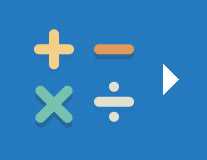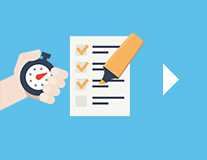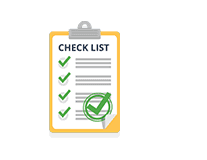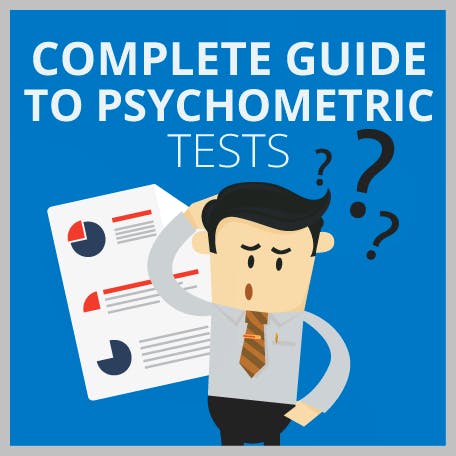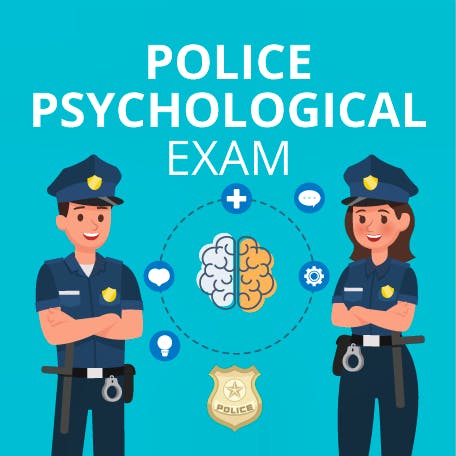Minnesota Multiphasic Personality Inventory (MMPI) – 2024 Guide
Updated November 18, 2023
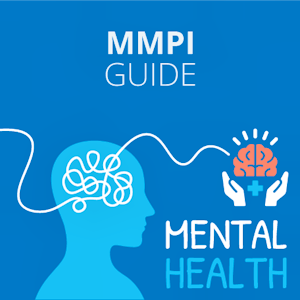
- What Is the MMPI Assessment?
- History of the MMPI
- Types of MMPI Tests
empty
empty
empty
empty
empty
- How the MMPI Is Used
- What the MMPI Test Measures
empty
empty
empty
empty
empty
empty
empty
empty
empty
empty
- MMPI Test Validity Scales
empty
empty
empty
empty
empty
empty
empty
empty
empty
empty
- What to Consider When Taking the Test
empty
empty
empty
empty
empty
- Frequently Asked Questions
- Final Thoughts

What Is the MMPI Assessment?
The Minnesota Multiphasic Personality Inventory (MMPI) is one of the most widely used assessment tools used to help clinically diagnose mental health disorders.
Originally developed in the late 1930s, it is used by mental health professionals, lawyers and even in some cases by employers when they are hiring for positions that are considered to be high-risk, such as working in the police, in nuclear power plants or in air traffic control.
The MMPI is a self-reporting tool that is administered by professionals, and during the assessment, you will be asked to answer hundreds of true/false questions, which help paint a picture of your mental health and your personality traits.
As a diagnosis tool, the MMPI is considered to be clinically accurate. It has been updated multiple times over the years to make it more relevant, especially in terms of cultural sensitivity.
The MMPI offers results that show on a scale what symptoms a person has, and what mental health problems that could be indicative of.
In addition, the MMPI is usually used in tandem with other diagnosis tools to provide a clear picture of a person's mental health.
History of the MMPI
The MMPI was developed by Starke R. Hathaway and J Charnley McKinley, a clinical psychologist and a neuroscientist respectively, who devised the test to be used in the Department of Psychology at the University of Minnesota.
Hathaway and McKinley, along with other noted professionals in the area, considered the self-report tools of the time to be lacking; they were too transparent which meant that a test taker could guess the intent behind the questions and manipulate their answers.
The answer to this was the earliest version of the MMPI, which was created by selecting items that were based on the questions (and answers) given by those who had been diagnosed with different mental disorders.
This made the questions less obvious, but also more valid – which is why even today the MMPI is considered to be one of the most robust and valid psychological self-reporting tools available.
Moreover, the MMPI was first published by the University of Minnesota Press in 1972, and it is currently licensed for distribution to Pearson (among others) – although as a protected psychological test, it is not available online, and only professionals who hold the correct credentials are permitted to purchase it.
This is why when you take the test, it will be administered at a specified location under supervision, although the test is computerized.
You can find practice or example questions online, but you need to be invited to complete the test by someone who is appropriately licensed (usually a mental health professional).
Types of MMPI Tests
As can be expected with a test that was first published nearly 100 years ago, some of the relevance of the questions – as well as the validity of the assessment as a whole – have been called into question.
This is a well-researched test that has had many studies completed on it, and revisions have been made to not only make it more relevant but also to work on bias that may have existed in early forms, particularly related to racism and homophobia.
With this in mind, there are still several versions of the test available.
MMPI-2
This is the standard adult version of the test and is the major revision of the original assessment. A
lthough there have been several minor updates since this test was published in 1989 and was revised to ensure that it more closely reflected cultural and social diversity.
In the MMPI 2 test, you will need to answer 567 questions in a true/false format.
The test is not timed, but it usually takes between 60–90 minutes to complete.
MMPI-2-RF
The MMPI – 2 – RF is a shorter version of the standard adult test, in which you will need to answer 338 true/false questions.
This test usually takes 40–50 minutes to complete.
It was released in 2019 and designed to be easier to administer.
MMPI-A
The MMPI-Adolescent, referred to as the MMPI-A, is a standard test that is offered to teenagers aged between 14 and 18 years old. This test was first released in 1992.
This test contains 487 questions and usually takes about 60 minutes to complete.
MMPI-A-RF
This is the shortened version of the MMPI-A, made up of 241 questions to be answered in 25–45 minutes.
MMPI-3
The MMPI-3 test is the most up-to-date version of the clinical tool.
Published in 2020, it has seen updates made in 2022 and contains updated questions as well as scales and comparison norms to make it both faster to administer and easier to complete.
The MMPI-3 contains 335 questions and takes between 25 and 50 minutes to complete.
This is a more inclusive test as it is available in Spanish and French as well as in English.
How the MMPI Is Used
The original purpose of the MMPI was to screen people for mental health conditions as part of the work that was being done in the Department of Psychology at the University of Minnesota.
The application of the assessment has widened throughout the years, thanks mainly to the robust research that has helped create it and the validity scales and accuracy that has been reported in its use.
Currently, MMPI is most often used by mental health professionals as a tool to help diagnose mental illnesses and assess the severity of conditions.
It can also be used in substance abuse programs to help provide extra support in addiction recovery when needed.
Lawyers will sometimes use the MMPI as forensic evidence, particularly in criminal defense cases and in child custody hearings.
The most controversial use of the MMPI is as a suitability assessment for employment.
Personality testing as part of the recruitment process is nothing new, but there has been some discussion as to whether the MMPI is too invasive and personal to be used in this way.
It is typically only used when hiring for job roles that are considered to be high risk, and where there could be considerable harm to the public – roles like the police, firefighters, and nuclear power plant workers as well as pilots and air traffic controllers, for example – but there are those that feel the MMPI is unconstitutional in this situation.
There are also considerations about whether this assessment being used in employment goes against the Americans with Disabilities Act (ADA).
What the MMPI Test Measures
In all the versions of the MMPI assessment, there are 10 different scales that are used to indicate certain mental health conditions.
While the scales are separate indicators, in many cases they monitor overlapping symptoms as mental health can be a spectrum, which is why they are not considered to be a pure measure.
Other physical and mental health problems, cultural issues, lack of education and other social and economic factors can affect the way a person completes the assessment.
This is why mental health professionals will apply this tool alongside others to ensure a full and relevant picture of each patient is built.
The MMPI Scales are as follows:
Scale 1 – Hypochondriasis
Hypochondria is an overwhelming concern about physical symptoms and well-being, and someone who is suffering from this will tend to believe that they have an undiagnosed medical condition.
There are 32 questions on this scale, and a high score would demonstrate that worrying about your health is interfering with your life, causing problems in your relationships, and being neurotically concerned about the way your body is functioning.
Scale 2 – Depression
Symptoms of depression that are evaluated in this scale include things like a lack of hope for the future and poor morale, as well as a general malaise or being dissatisfied with your situation.
There are 57 items in this section, and someone who scores highly here might be diagnosed with clinical depression or have suicidal ideation.
Scale 3 – Hysteria
Hysteria is a group of symptoms that relate to your response when in stressful situations.
Some people will have both physical and emotional responses to stress, and it tends to be those who are well educated and from a higher social class that score highly here, and women more than men.
Symptoms include shyness, cynicism, poor physical health and neuroticism.
Scale 4 – Psychopathic Deviate
This scale was originally created to evaluate symptoms of psychopathy, but today it is more a measure of antisocial behavior, social deviation and amorality as well as a lack of acceptance of authority.
Low scorers on this scale are usually rule followers, while those who score highly are more likely to be rebellious.
Rather than being diagnosed with a psychopathic disorder, high scorers here are usually diagnosed with a personality disorder.
Scale 5 – Masculinity-Femininity
This scale was intended to look for signs of homosexuality, back when it was considered to be a mental illness.
Today, this scale looks at how much an individual identifies with gender norms or stereotypical male and female behaviors.
It includes items relating to activities, interests, sensitivity and aesthetic preferences.

If you want 12-month access to all the practice resources for this test, our partner TestPrep-Online.com offers a Family Membership.
Family Membership gives you access to all the TestPrep-Online resources for the next 12 months. You will also get two separate accounts, which can be very helpful if you have two children preparing for their tests.
Scale 6 – Paranoia
The questions in the paranoia scale relate to things like being suspicious and concerned with being persecuted like everyone is out to get you.
Paranoid people may have symptoms like excessive sensitivity, and they may have rigid attitudes and mindsets or come across as grandiose.
Scale 7 – Psychasthenia
Although the name of this scale is not in use anymore, the scale itself is still used.
In most ways, the symptoms that this scale describes lend themselves to mental health problems like depression, obsessive-compulsive disorder and anxiety.
Excessive doubts and unreasonable fears are explored on this scale, as are compulsions and obsessions.
Scale 8 – Schizophrenia
Items in this scale look at things like lack of deep interests, strange perceptions of themselves and others and poor familial relationships.
Schizophrenia symptoms might include a lack of impulse control and sexual difficulties, and alienation from society, being more interested in themselves than in other people.
Scale 9 – Hypomania
A high score on this scale would indicate that a person has bipolar, and some of the symptoms that are evaluated are things like egocentricity, irritability and excessive energy, as well as elevated mood with brief periods of depression.
Scale 0 – Social Introversion
This scale was added in one of the revisions of the MMPI, so while it didn’t exist in the original test it has become invaluable when looking at social skills.
In this scale, questions are asked about things like shyness, compliance, competitiveness and whether the person tends to withdraw rather than get involved in social situations.
MMPI Test Validity Scales
To counteract the possibility of inaccurate self-reporting, whether intentional or unintentional, several scales are added that are designed to pinpoint deceptive or inconsistent answers.
The range of uses that the MMPI has means that persons who are required to take the test might want to over-report or under-report their reactions, while others might not want to be engaged in the process at all, marking items at random.
These scales look at different inconsistencies and signs of dishonesty and are reliable in evaluating whether answers are truthful representations of the person being tested.
The L Scale
The L Scale is often referred to as the ‘Lie Scale’, and it is used to establish whether someone is being evasive in their answers so that they can portray themselves in a better light.
The items here test the person on whether they are avoiding their shortcomings or any characteristics that they might perceive as unfavorable.
The F Scale
When someone is trying to over-report their symptoms, they might want to be perceived as suffering more from mental health problems than they actually are.
The ‘Faking Scale’ detects when someone is randomly answering questions by looking at responses that might be contradictory, although it may be that the respondent is under severe psychological distress at the time of taking the test.
The K Scale
Another factor of under-reporting is defensiveness, and this scale asks questions to determine whether the respondent is trying to give the impression that they are well-balanced because they fear being judged.
They might be minimizing their problems in self-control or relationships.
The ? Scale
This scale is concerned with the number of questions that are left unanswered, as there is a limit to the number of times that a respondent cannot answer a question.
This is referred to as the ‘Cannot Say Scale’, and according to the MMPI manual, a test with 30 or more cannot say answers should be considered to be invalid.
TRIN Scale
The True Response Inventory is looking for respondents who are selecting their responses based on a pattern, rather than reading and responding to the question itself.
This might be due to a lack of comprehension skills, or they might not want to be involved in taking the test.
VRIN Scale
The Variable Response Inconsistency scale is similar to the TRIN scale, but this time it is looking for respondents who might be selecting answers at random, again without looking at or reading the questions.
This can usually be pinpointed through responses that appear random and are inconsistent.
The FB Scale
The FB scale is concerned with inconsistencies in responses in the latter half of the assessment when compared to the first half.
This might mean that the respondent is no longer paying attention, for they are becoming tired or distressed so they have started to under-report or use random or fixed answering patterns.
The FP Scale
The FP scale is looking for signs that someone is over-reporting their symptoms intentionally.
This might be because they are suffering from stress or have a mental health disorder, or it could be because they are looking for help.
The FBS Scale
This scale is mostly used in personal injury or disability claims to verify whether the test taker is credible in the symptoms that they are reporting.
The S Scale
The final validity scale is also the newest to be added and is known as ‘Superlative Self-Presentation’.
This looks at other reasons for people to under-report their symptoms and asks questions relating to morality and contentment, so it is likely to make them look better.
What to Consider When Taking the Test
There Is No Pass/Fail
The MMPI is not a test that has a pass or fail score; it is a diagnostic tool that is used to evaluate people based on their mental health.
This means that there is no score that you should be aiming for when you take the test, and your results will be used in conjunction with other tools to determine your personality and whether you are showing symptoms of mental ill health.
Individuals Can Take the MMPI Test Online for Free
There is no cost to you for taking the test; it is computerized and will mostly be given in a test center with some description.
You might take it on your own, or in a group.
In addition, there are practice tests available online, these are similar to the MMPI, but they are not diagnostic tools.
However, they can help you get used to the layout and structure of the test so that you are more familiar with the environment of the assessments.
There Is No Studying for the Test
The MMPI is not something that you can study to improve your score – as mentioned before, it is not an assessment that you can pass or fail, so there is no need to revise anything.
Like other personality tests, you need to answer the questions based on your own feelings and experiences.
The Test Should Be Given by a Professional
The MMPI is not available to the public, and it can only be purchased by someone who is licensed and has the required certification which means that you should only have the MMPI test administered by a professional.
This is because it is a protected psychological test and a diagnostic tool that requires knowledge and experience to read and understand the results (and provide any necessary diagnosis and support afterward).
It Is Important to Be Honest
The final point to remember is that you need to be honest when completing the MMPI.
Whether you are taking it as part of a mental health diagnosis, a legal process, or as part of a job application, your answers need to be honest and representative of who you are and how you feel for the best results.
Furthermore, the test itself is designed to weed out any insincere answers and will make it clear to the professionals that you are not answering properly whether that is intentional or unintentional.
While the test can take a while to complete, especially the standard test, make sure you concentrate until the end.
Frequently Asked Questions
The Minnesota Multiphasic Personality Inventory (MMPI) is a mental health and personality diagnostic tool that is used in mental health facilities, in legal cases, and sometimes as part of a job application process. The test is self-reporting and consists of a number of true/false questions.
The MMPI tests for responses that demonstrate different symptoms related to mental health problems, such as anxiety, paranoia, and depression among others. These are marked on scales that correlate to the experiences and answers given by people who have been diagnosed with different mental health issues.
The MMPI is a protected psychological test, which means that it is not available for the public to use. In addition, the test is owned and published by the University of Minnesota Press, and licensed for distribution by organizations like Pearson, but to buy the test you have to have the relevant certifications and licenses.
You do not need to study for the MMPI, as it is an assessment based on your own experiences and beliefs, but you might find it helpful to look at some practice questions so that you can get familiar with the test structure.
The MMPI tests for symptoms that could be indicative of mental health disorders or personality problems, such as:
- Hypochondria
- Depression
- Hysteria
- Personality Disorders
- Paranoia
You cannot pass or fail the MMPI test. If you are to take the test, you just need to answer all the questions as honestly as possible so that you get the most relevant result.
There are several different MMPI tests, and the number of questions (and the time it takes to answer them) depends on which test you are taking.
- MMPI-2: 567 questions, 60-90 minutes to complete
- MMPI-2-RF: 338 questions, 40-50 minutes to complete
- MMPI-A: 478 questions, 60 minutes
- MMPI-A-RF: 241 questions, 25-45 minutes
- MMPI-3: 335 questions, 25-50 minutes.
Final Thoughts
The Minnesota Multiphasic Personality Inventory is a well-researched and valid tool used in diagnosing mental health conditions and personality.
With numerous revisions since it was first published, the MMPI asks relevant questions that are designed to not only pinpoint symptoms of mental health and personality disorders but also to help psychologists and other professionals ensure that people get the help they need.
If you are taking the test, the best thing to do is pay attention and answer each question honestly – there are dozens of fail-safes built in to ensure that your answers are valid and that there is no dishonesty, under-reporting or over-reporting, whether intentional or not.



